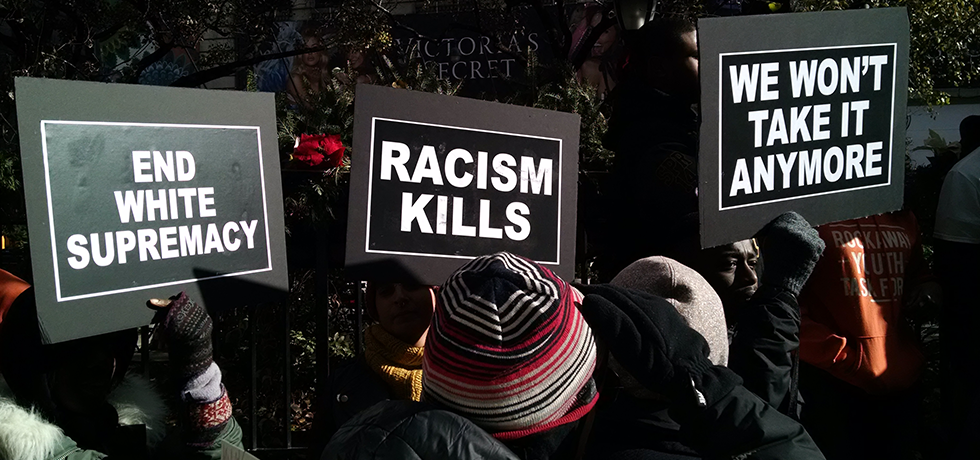by AJAMU BARAKA
 PHOTO/Global Justice Ecology Project.
PHOTO/Global Justice Ecology Project.
Time to De-colonize Human Rights!
The post-WW II promise of human rights was a compact meant for white people only, but a People-Centered Human Rights framework seeks global liberation and transformation.
“If human rights are to have any incredibility, any “universal” applicability, any value, they must be seized from the barbaric grip of European and de-colonized.”
“…recognition of the inherent dignity and of the equal and inalienable rights of all members of the human family is the foundation of freedom, justice and peace in the world”
These are the words in the preamble the of the Universal Declaration of Human Rights (UDHR) promulgated 70 years ago on December 10, 1948. They were supposed to reflect a new understanding of the causes of war and a commitment to the highest values of the “international community.”
The UDHR was the first major instrument produced by the United Nations (UN), an institution itself created at the end of the Second World War. Its creation was hailed as a breakthrough that would give institutional substance to the pledge by member states to promote international cooperation, commit to peaceful relations among states and respect human rights and fundamental freedoms.
According to Elenore Roosevelt, wife of President Roosevelt and U.S. representative to the UN Human Rights Commission, the structure responsible for producing the UDHR, the declaration reflected those natural and eternal rights that, nevertheless, were not always seen but under the right circumstances could be revealed and nurtured.
It was thought by many that the UDHR with its commitments to freedom of thought and speech, assembly, education, life-long social security, health care, food, the right to culture etc., represented the hope of an international community that had learned from the carnage of the Second World War, grew up as a result and were ready to collectively center the dignity of everyone.
70 years later, the historic record is clear. Instead of recognizing the inherent dignity and worth of individuals and collectives, the post-war period has been an era of human depravity.It is estimated that direct and indirect state and non-state violence has resulted in over 30 million dead, whole nations destroyed, the normalization of torture, rape as a weapon of war, millions displaced and once again the rise of neo-fascist movements across Europe and in the United States.
What happened?
What happened was the continuation of the Pan-European white supremacist colonial/capitalist patriarchy. The historic project temporarily diverted by the war as a result of the Germans bringing the horrors that European colonial domination unleashed on the “Americas” in 1492 back to Europe and applied to other Europeans. But once Hitler was dispensed with, the systematic brutality that created “Europe” continued.
The doctrine of discover, slavery, manifest destiny, the white man’s burden, the responsibility to protect, all of the ideological and policy expressions representing what Enrique Dussell called the underside of what is referred to as Western modernity. That underside that rationalized the stratification of human beings into those with rights and those who were killable, enslavable, and rapable, condemned the non-European colonized to what Fanon referred to as, “the zone of non-being.”
The Pan-European project represented a logic and rationale at the core of the European identity and its material foundation. It created an imperative that could not be easily dispensed of, without negating the very idea and materiality of Europe and what was understood as modernity.
Therefore, there was always an internal contradiction in European thought, captured and reinforced during the so-called Enlightenment, that produced an analytical and conceptual malady that can only be explained as a kind of psychopathology.
Popular Resistance for more